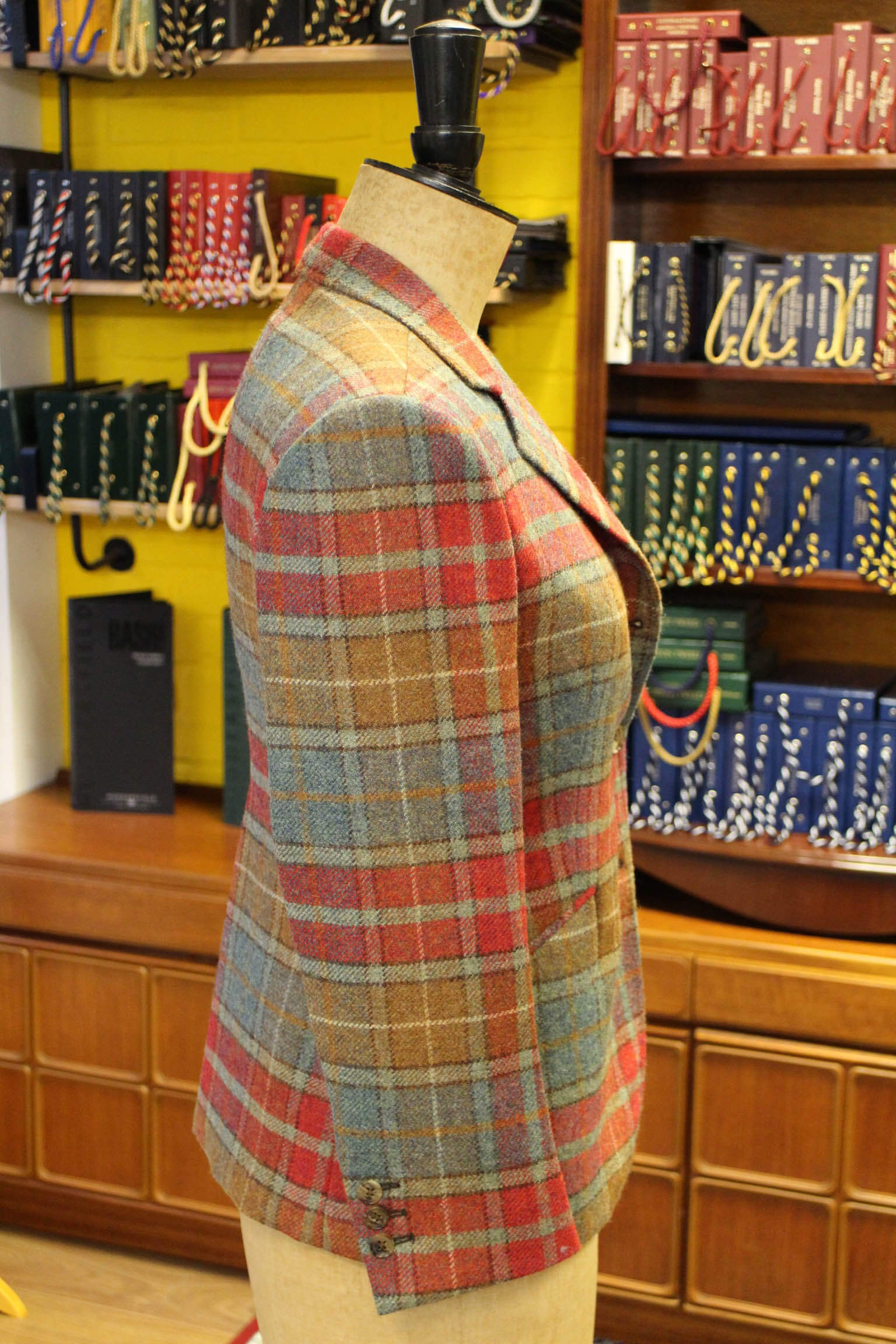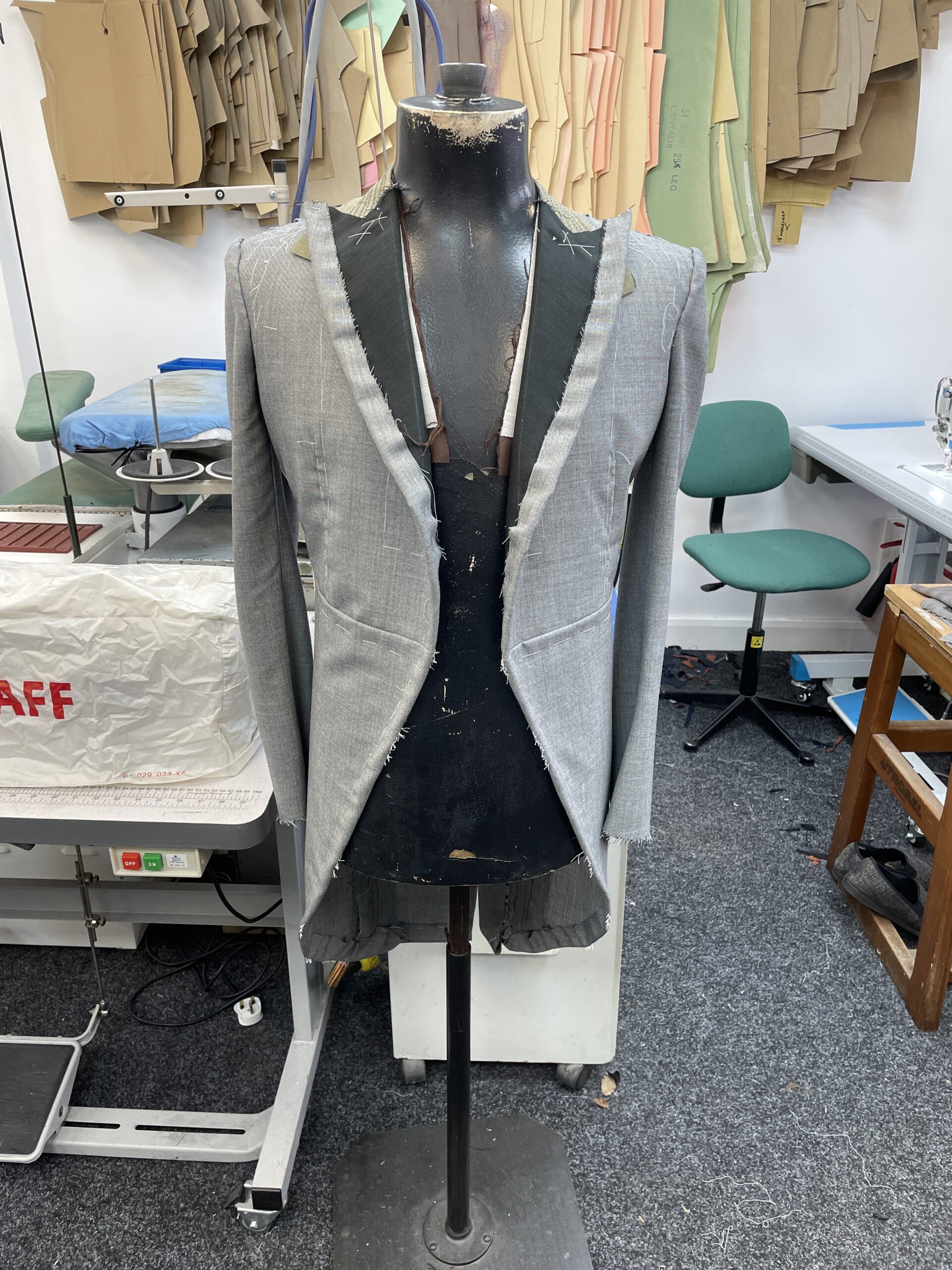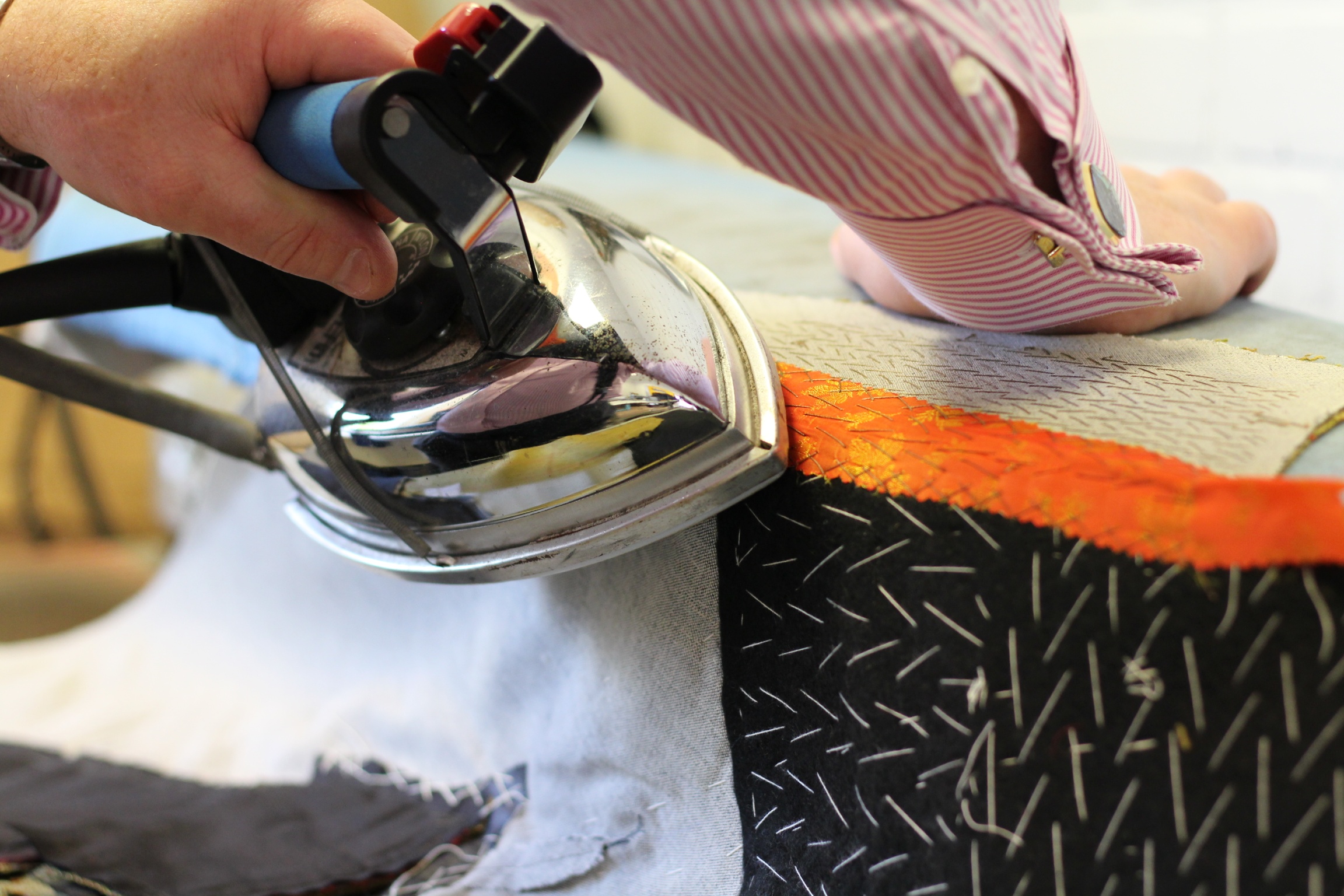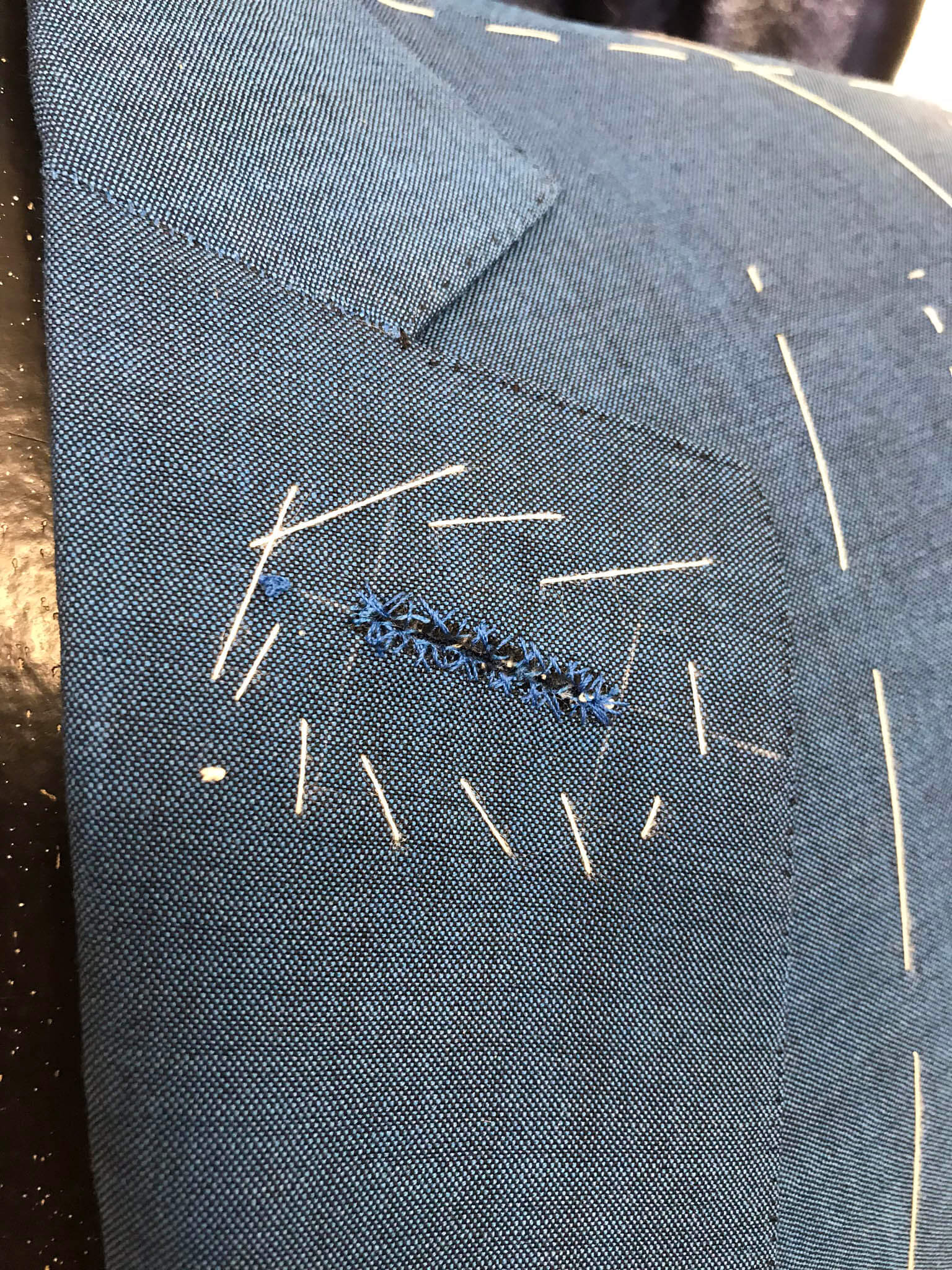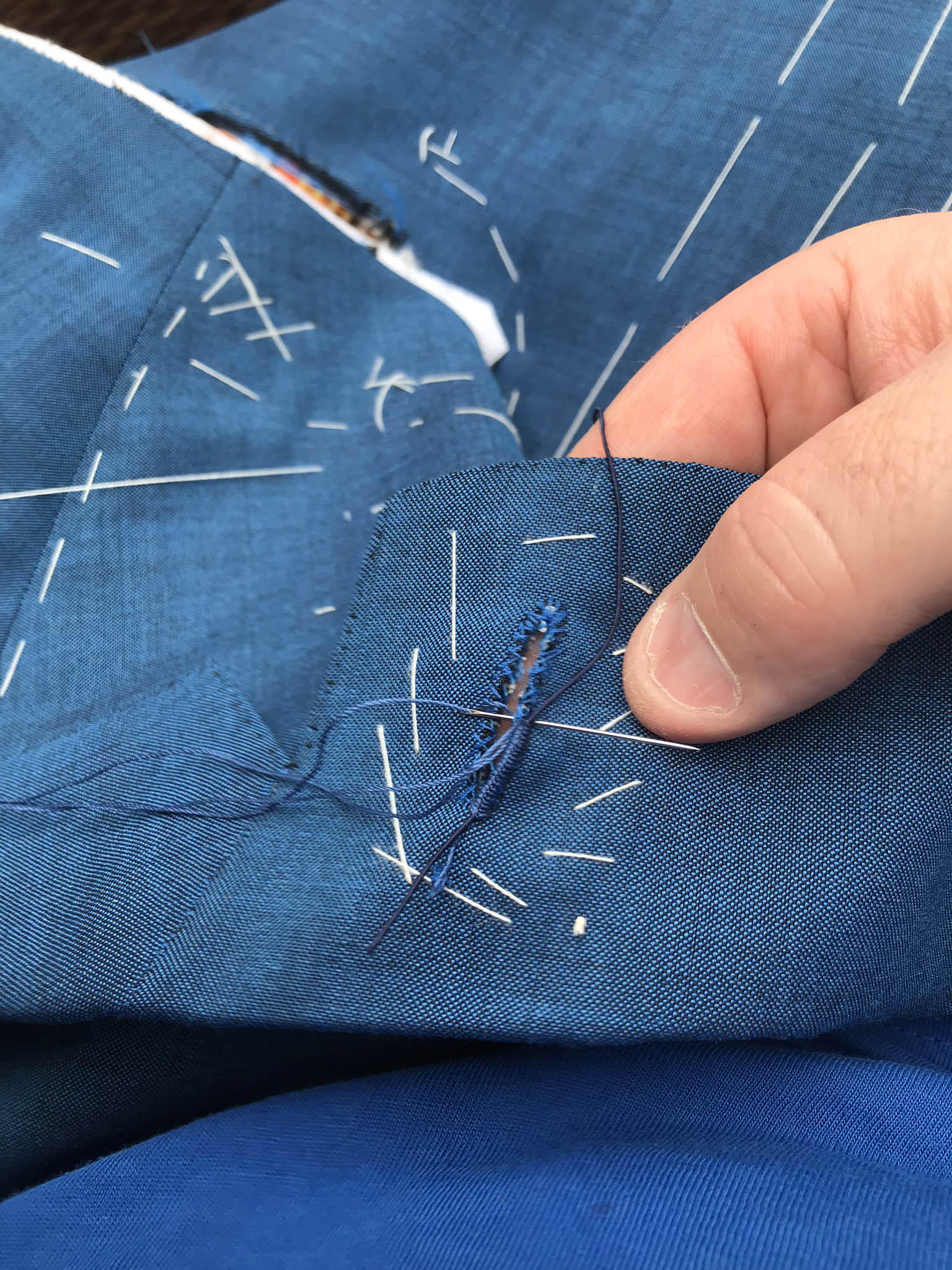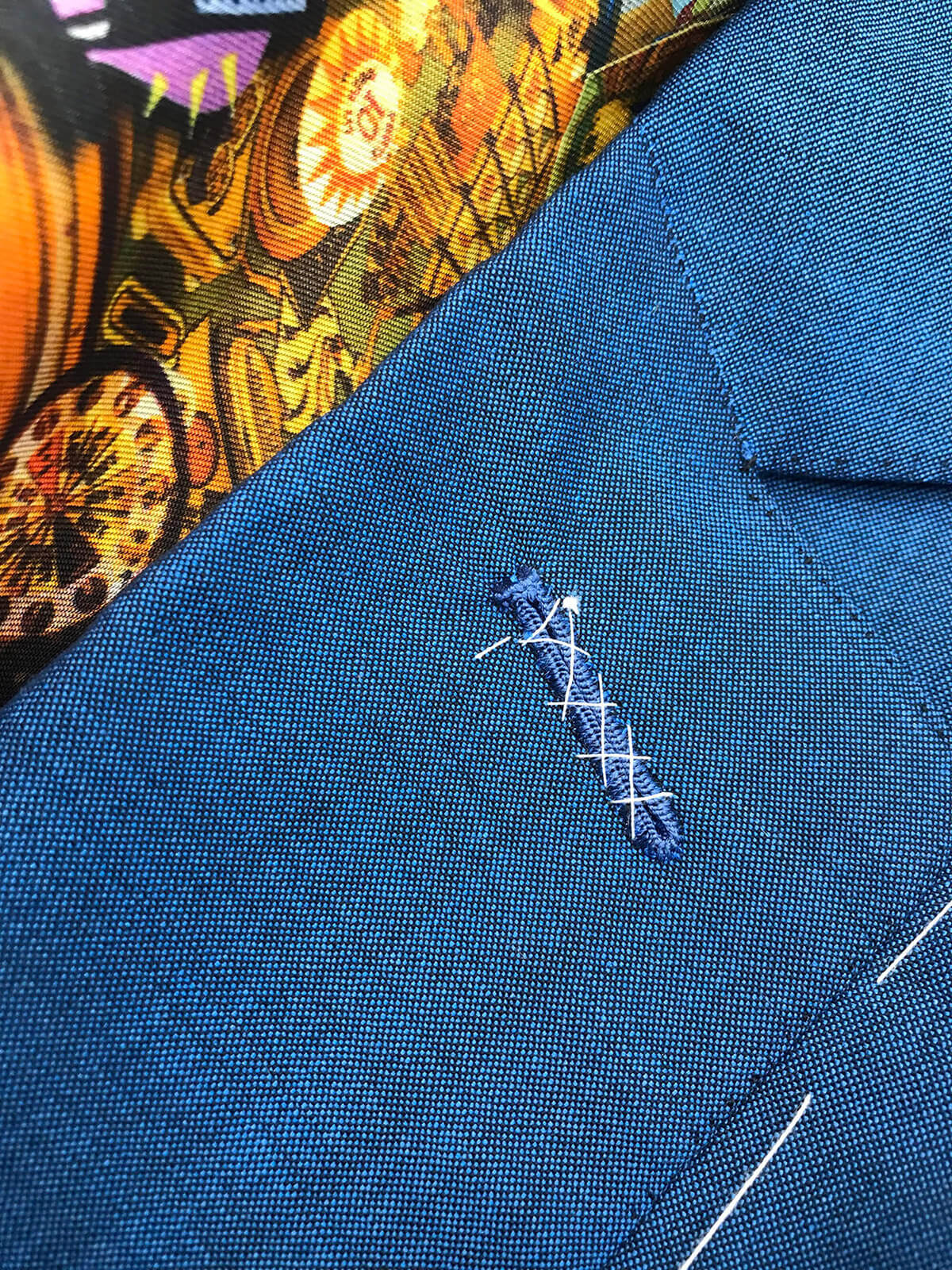Women’s Bespoke Suits
Good style and line are of paramount importance in the cutting and designing of women’s bespoke suits. There are no standardized rules of style and line to follow when drafting a pattern for women’s bespoke suits. Except the knowledge conveyed through one’s own eye and feeling for line.
Good bespoke tailoring is all about size and scale, and even more so when it comes to dressing the female figure. Too much attention cannot be given to ladies bespoke tailoring, especially the question of seam placement and seam run. The whole subject of good style and line is guided by the run of seams, to a greater extent than actual fit. A perfectly fitting and tailored garment is not necessarily one of good style. The seam placements must be in harmony with the figure and shape of the wearer.
If a woman is of larger proportions, the widths and dimensions of the design should not increase to the increase in the figure size. Otherwise we would only be making a copy of the wearers form, instead of endeavouring by the judicious placement of seams to convey an optical illusion of a slimmer build.
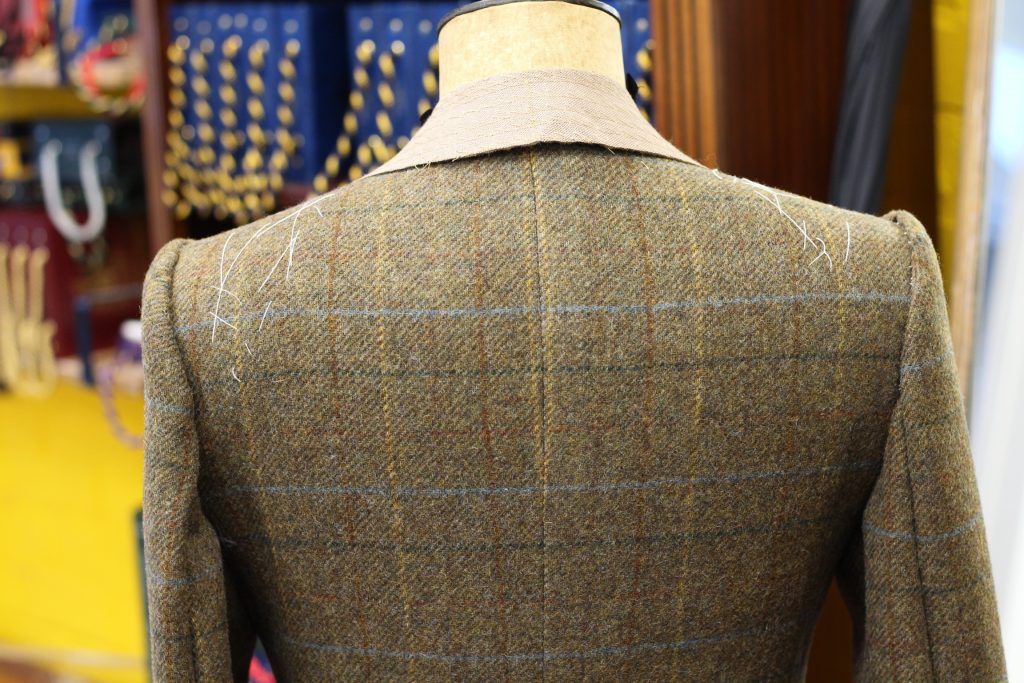
On the other hand, a slender figure with narrow shoulders may have the appearance of breadth conveyed by the wider spacing of seams at the shoulders. Tapering to a narrower width at the hip line. Definite rulings cannot be laid down. Only the guidance of good taste and artistic proportion can be relied upon to create truly stunning women’s bespoke suits.
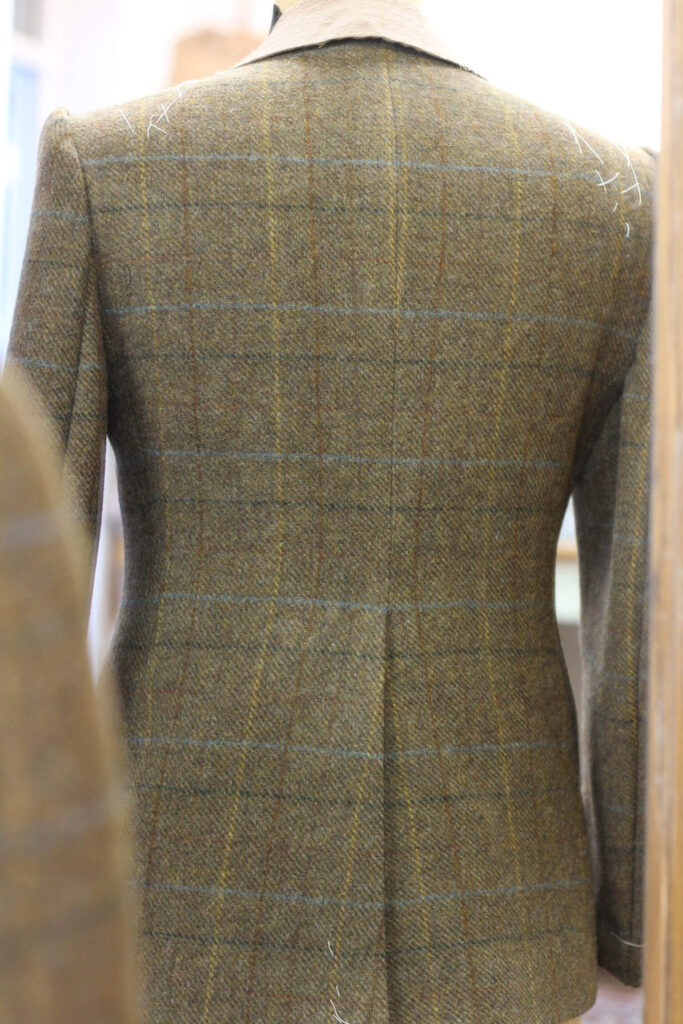
Always when I endeavour to clothe the human figure, I try to improve on Nature’s little deformities if possible, by my cutting skill and artistic perception. It is to women’s bespoke suits cutting that the “art of cutting” is most applicable. A cutter may master a system, and calculate to the nearest fraction of an inch, and provide a perfectly fitting garment. Yet the finished article lacks a certain “something” that is line and style. And the garment on the wearer is “dead” and lifeless, instead of moulding to the form of the figure into harmonious lines. The fault is that the seam runs are probably at variance with the shape of the figure.
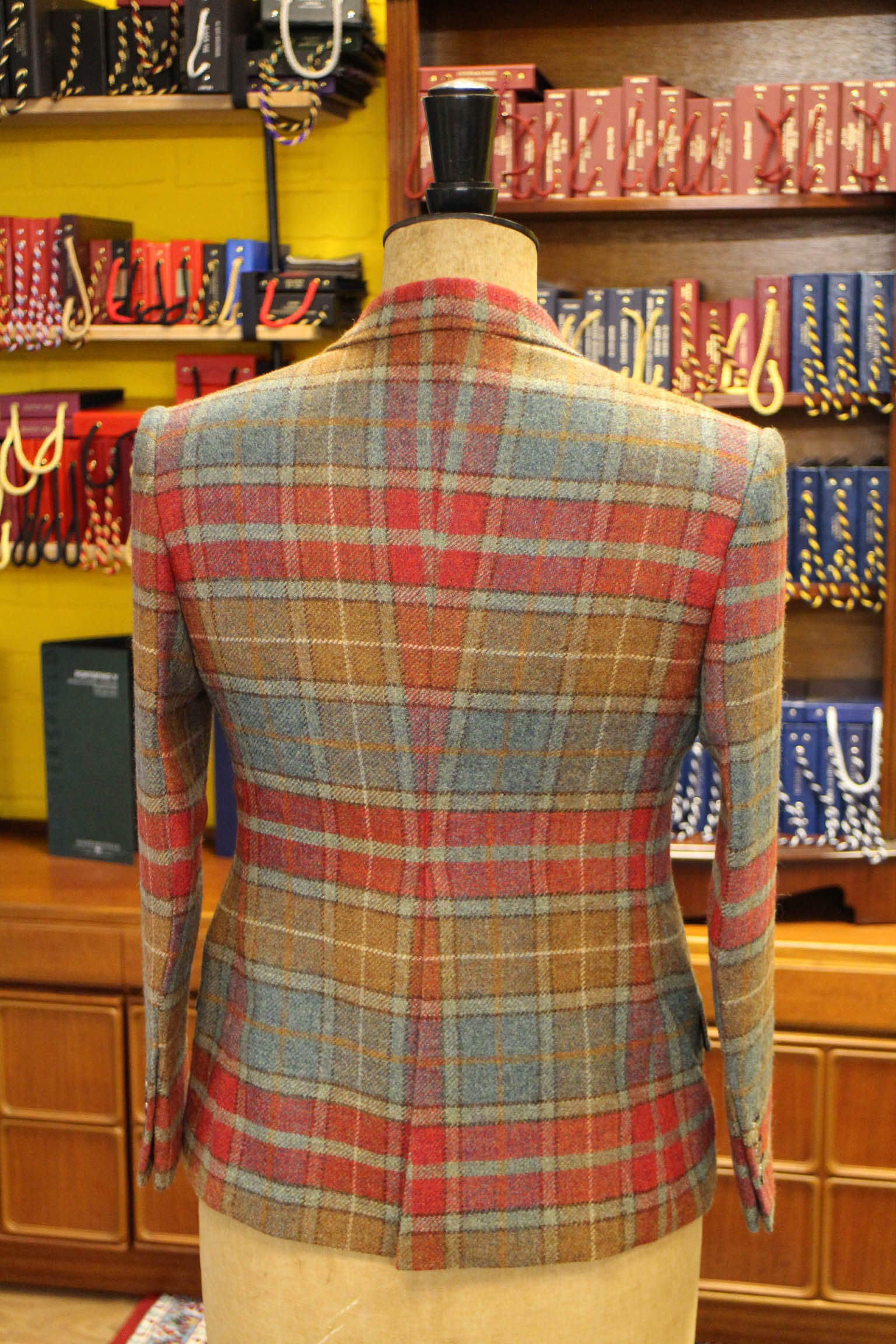
Line in women’s bespoke suits can only be achieved by a study of the shape and form of a woman’s figure. Then, by our perception, endeavour to transpose to the pattern this same shape, making the seam runs accentuate one part or minimise and disguise another. Courage and imagination are necessary to diverge from the lines laid down.
